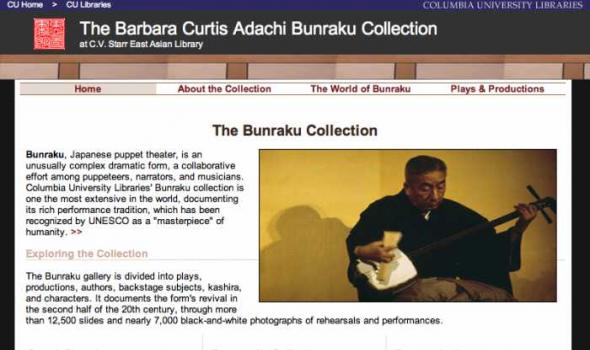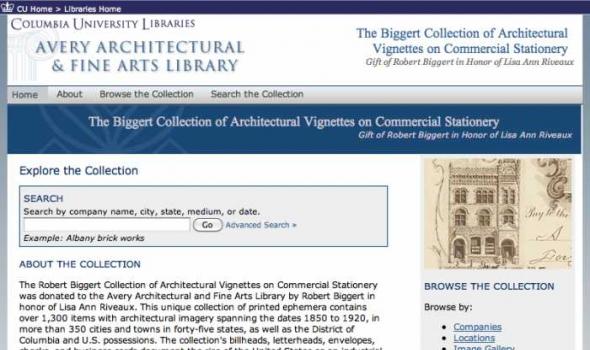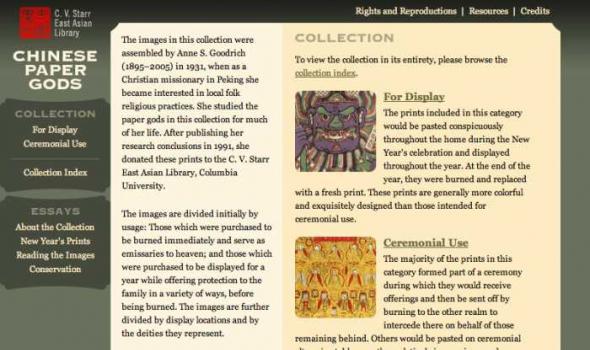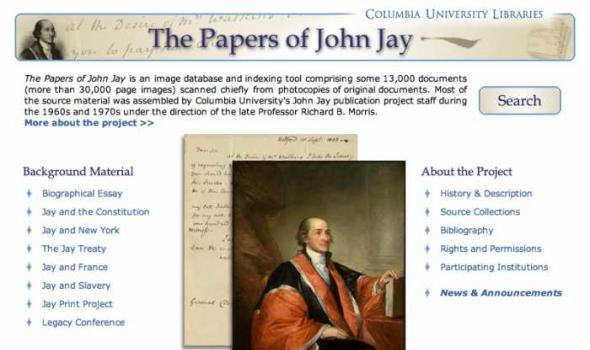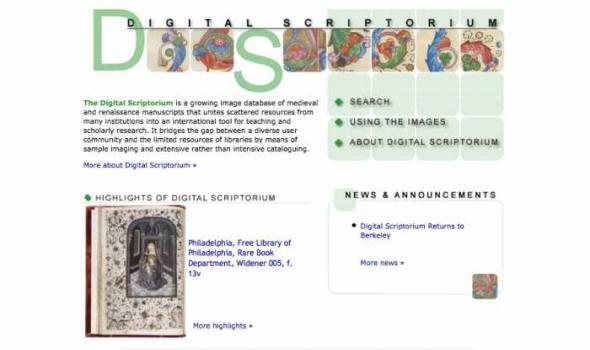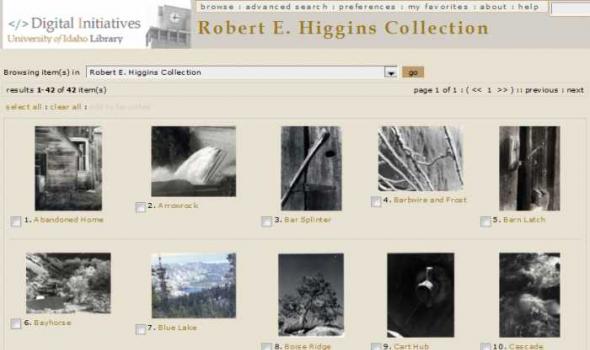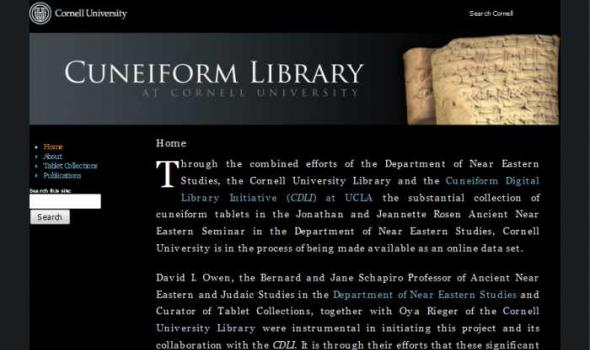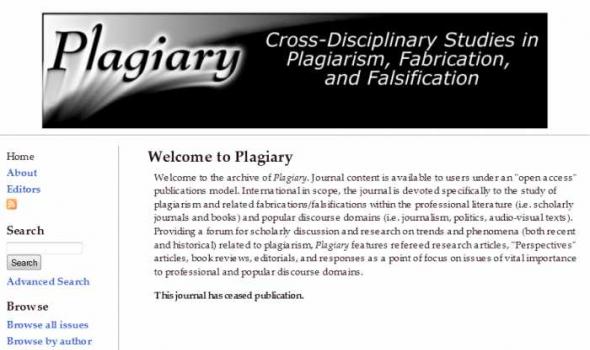Health & Medicine
This online collection offers important historical perspectives on the science and public policy of epidemiology today and contributes to the understanding of the global, social–history, and public–policy implications of diseases. Contagion: Historical Views of Diseases and Epidemics is a digital library collection that brings a unique set of resources from Harvard’s libraries to Internet users everywhere. Offering valuable insights to students of the history of medicine and to researchers seeking an historical context for current epidemiology, the collection contributes to the understanding of the global, social–history, and public–policy implications of disease.
- Biomechanics of Motion Collection Description The purpose of this Biomechanics of Movement collection is to create a structure and a web based user interface for researchers and students to access and utilize video clips of human movements. This interactive digital archive resource provides a mechanism for bringing together engineers, animators, computer scientists, and kinesiologists to collectively solve meaningful real world problems fundamental to functional movement. This digital collection of movement video clips is created by members of the USC Biomechanics Research Laboratory in collaboration with USC Libraries. CITE AS: Creator. Title. Date. From the Biomechanics of Motion Digital Archive. Digitally reproduced by the University of Southern California Digital Archive.
The Medical History of British India collection consists of official publications varying from short reports to multi-volume histories related to disease, public health and medical research between circa 1850 to 1920. These documents form invaluable source material for the reconstruction of the history of disease and medicine in British India. Although a large section of it has an all-India scope, the collection is especially rich in documents related to Bombay and the Punjab. The Bombay plague of 1896-1899, one of the severest outbreaks, is particularly well covered.
Blog September 9, 2009 About CHODARR What is CHODARR? CHODARR stands for Community Health Online Digital Archive and Research Resource which is a publicly accessible virtual library of community-based and government publications. It is a permanent, catalogued and full-text online archive of grey literature and research materials related to health and social welfare policy. The CHODARR archive includes documents that are not normally published by commercial publishers.
Dental Cosmos, a Monthly Record of Dental Science was the first enduring national journal for the American dental profession, and one of the most significant in the early history of American dentistry. The foundation of dental practice was documented and debated in its pages from 1859 through 1936, when it merged with the Journal of the American Dental Association , serving as a cornerstone for JADA and the model of what a successful dental journal could be. Many of these original source articles are still cited and considered classics in the field. The conversion of Dental Cosmos (1859 to 1936) from print to electronic was made possible through the generous support of the Colgate-Palmolive Company. Last update December 4, 2006.
Jon Cohen AIDS Research Collection Welcome to the Jon Cohen AIDS Research Collection. Noted Science writer Jon Cohen, has donated to the University of Michigan this collection of AIDS-related material he amassed while writing the book, Shots in the Dark: The Wayward Search for an AIDS Vaccine . Largely focused on AIDS vaccine research, the collection spans 20 years and contains conference materials, meeting agendas and minutes, promotional materials, scientific reports and numerous government materials among other forms of documentation not found elsewhere in digital form. With a generous grant from the John D.
About the collection The AIDS Poster Collection consists of 625 posters from 44 countries including Australia , Austria , Canada , China (and Hong Kong ), Costa Rica , France , Germany , India , Japan , Luxembourg , Martinique , the Netherlands , New Zealand , Papua New Guinea , Poland , Portugal , Spain , Switzerland , Tahiti , Uganda , the United Kingdom , and the United States . The posters were issued by a variety of institutions and organizations to educate and warn people about AIDS and to offer advice and information in visual form. Some are more blunt and graphic than others, and they come in many styles.
Kirk Collection Box A Brown University Library Providence, RI 02912 Tovah Reis Developed & hosted by Center for Digital Initiatives Box A Brown University Library Providence, RI 02912 cdi@brown.edu About This Collection The digitized items in the Alcohol, Temperance and Prohibition Collection are from the Alcoholism and Addiction Studies Collection , as well as from various collections in the Brown University Library — broadsides, sheet music, pamphlets and government publications.
History of Medicine About a hundred years ago, public health took a visual turn. In an era of devastating epidemic and endemic infectious disease, health professionals began to organize coordinated campaigns that sought to mobilize public action through eye-catching wall posters, illustrated pamphlets, motion pictures, and glass slide projections. Impressed by the images of mass media that increasingly saturated the world around them, health campaigners were inspired to present new figures of contagion, and recycle old ones, using modernist aesthetics, graphic manipulations, humor, dramatic lighting, painterly abstraction, distortions of perspective, and other visual strategies.
History of Medicine Introduction 引言 Tuberculosis was one of the major epidemic diseases in 20th-century China, along with smallpox, malaria, cholera, schistosomiasis, and other epidemics. Organized efforts to fight the disease began in 1933 when the National Anti-Tuberculosis Association of China was established. From 1950 through 1980, the Chinese government launched anti-tuberculosis campaigns as part of the national public health movement. The Anti-TB Association and the Red Cross played important roles in the health education campaigns. Health posters became an important tool to disseminate health knowledge and methods of prevention and treatment. The campaigns, along with the universal free healthcare, led to a significant decline of tuberculosis.
Medicine in the Old World arose from many components: the classical Greek tradition, its Christian re-elaboration, the contributions of the Arabic World, and the unique medieval synthesis of them all. By examining significant pages and illuminations from manuscripts and early printed books of the National Library of Medicine, one can see how these cultures contributed to the creation of medical knowledge in Europe.
These pages are a journey through time and space, as medical knowledge moved around and across the Mediterranean Sea. Mare nostrum—Our Sea—divided societies into several groups, but it could be crossed, making cultural contact, trade, and the exchange of ideas possible.
History of Medicine The Letters | Life, Family, and Times | Henkel Family Heritage | Colophon , , , , U.S. National Library of Medicine, 8600 Rockville Pike, Bethesda, MD 20894 , Last reviewed: 26 July 2011 Last updated: 26 July 2011 First published: 14 June 2010 | : Permanent: Dynamic Content
History of Medicine Chinese medicinal compounds were recorded as early as the Han dynasty, 2,000 years ago. Beginning in the 1880s, Western companies – notably Bayer, Hoechst (now Aventis), and Eli Lilly – challenged traditional medicine with the resources of modern capitalism. In turn, Chinese companies entered the new commercial markets: the Tianjin Pharmaceutical Factory, founded in 1921, used western methods to produce and market traditional Chinese medicines. The sheets shown here advertise a mix of European and Asian products, using ideal feminine and masculine images as well as the Tian An Men (Gate of Heavenly Peace). Ads for progesterone and methyltestosterone show the appeal of potent over-the-counter hormone therapies. 21 April 2010
History of Medicine Many histories have been written about medical care during the American Civil War, but the participation and contributions of African Americans as nurses, surgeons and hospital workers have often been overlooked. Binding Wounds, Pushing Boundaries: African Americans in Civil War Medicine looks at the men and women who served as surgeons and nurses and how their work as medical providers challenged the prescribed notions of race and gender. Explore the exhibition online , use the educational resources in the classroom or find out if the traveling exhibition is coming to a local library near you. Find Resources Explore the Exhibition See it Near You 04 October 2010
History of Medicine Public Health And War Public health and war have long been close companions, and maybe strange bedfellows. Starting with the Crimean War, and then the first terrible round of "modern wars" -- the American Civil War, the Franco-Prussian War and World War I -- military officials and civilian leaders called on health professionals and volunteers to help mobilize and protect military forces and civilian populations. Health professionals and volunteers, in turn, viewed war as an opportunity to test and implement their theories, as an opportunity to use newly discovered knowledge and newly invented technologies -- and eagerly jumped on war bandwagons to advance their professional, scientific, political and ideological goals.
The perspectives of surgeons, physicians, and nurses are richly documented in the history of Civil War medicine, which highlights the heroism and brutality of battlefield operations and the challenges of caring for the wounded during wartime. Yet the experiences of injured soldiers during the conflict and in the years afterwards are less well-known. Life and Limb: The Toll of the Civil War focuses on disabled veterans and their role as symbols of the fractured nation.
Exhibition Healing Ways Uncover how diverse lifestyles and shared experiences have helped sustain the health and well-being of Native populations for generations. Hōkūle‘a Native Hawaiians owe their existence to the Hōkūle‘a voyaging canoe. Its resurgence in the last century has led to a cultural revival, inspiring Native Hawaiians of all ages to learn more about, and to value, their traditions. Healing Totem The National Library of Medicine’s healing totem was created by master carver Jewell James, of the Lummi Nation in the Pacific Northwest, to promote good health.
History of Medicine Introduction The National Library of Medicine's Bathtub Collection is an archive of materials found in the old bindings when rare books in the Library were conserved. The materials found in the bindings include fragments of old printed books or manuscript materials which are often treasures on their own. In the Bathtub Collection, NLM has organized and described these fragments and made them available to scholars. The story of the Bathtub Collection begins in the middle of the last century. In the 1940's, The Army Medical Library, as the National Library of Medicine was then known, began a serious conservation program for its rare book collection. The AML hired Dorothy Schullian as curator of rare books and Jean Eschman, a master bookbinder from Switzerland.
History of Medicine The tragedy of the AIDS epidemic brought about an outpouring of items, intended to educate the public about the disease and its consequences. Starting in the early 1980s—AIDS was first identified in 1981—the initial response to the disease generated ephemeral public health materials, such as buttons, posters, cards, comic books, and even lunch boxes. Since AIDS was both incurable and invariably fatal, these messages of prevention were the only effective steps that public health officials could take. Produced by government health departments as well as private organizations, these ephemeral objects became an important medium for messages of awareness, prevention, compassion, and responsibility.
History of Medicine Español - Italiano Healing and faith have always played a role in the lives of the faithful. They are interwoven in the fabric of social history. How we regard illness and healing, and how we cope with them have captured our imagination throughout the ages. The expression of our relationship with illness is wonderfully illustrated in the ex-voto, a devotional painting giving thanks to a saint or deity for a miraculous healing or a blessing. The faithful have always used prayer to invoke the aid of saints as a means to heal the sick and end one's suffering. These devotional paintings are an individual's expression of thanks for the intercession of the divine in a crisis, a snapshot in time of illness and healing.
History of Medicine Robert Hooke (1635-1703) was a remarkably versatile man — artist, biologist, physicist, engineer, architect, inventor, and more. However, his crowning glory was Micrographia: or Some Physiological Descriptions of Minute Bodies made by Magnifying Glasses , first published 1665. It was a masterpiece — an exquisitely illustrated introduction to the previously unknown microscopic world. This exhibit focuses on Hooke's influences and legacy in print, the pioneering books that stimulated Hooke's research, and the works he left for others — most famously the great Dutch microscopist, Antoni van Leeuwenhœk (1632-1723). August 1 – November 1, 2007.
History of Medicine Guide to Tropical Disease Motion Pictures and Audiovisuals Introduction The Tropical Disease Motion Picture and Audiovisual Collection is comprised of films, videorecordings, and digital videocasts produced from the 1920s through 2009, with the majority shot prior to the 1960s. All are devoted to health concerns and include material on medicine and public health. Materials range from ideological, documentary, educational, and training films to American war propaganda. The intended audience is diverse and includes military personnel, health professionals, and the general public.
History of Medicine Charlotte Perkins Gilman writing at her desk, ca. 1916-1922 Dr. S. Weir Mitchell, author and physician, 1906 Charlotte's doctor, nerve specialist Dr. S. Weir Mitchell, had built an eminent medical career working with soldiers injured during the Civil War. He then focused on the treatment of women with nervous exhaustion, devising a “rest cure” in which the patient was not allowed to read, write, feed herself, or talk to others.
History of Medicine Introduction Malaria was historically a major threat to the health of the Chinese people. In 1950, over 30 million Chinese people suffered from malaria and one percent of them died. The Chinese government launched national campaigns against malaria in the early 1950s. Programs of malaria control were integrated in the general rural development of land reclamation, irrigation construction, and improvement of sanitary conditions for both humans and livestock. While timely treatment of malaria is essential, the anti-malaria campaigns strongly emphasized preventive methods, as "prevention first" was the health policy in the 1950s-1980s.
Home > Library Catalogs & Services > Fact Sheets > Images from the History of Medicine (IHM) Fact Sheet Images from the History of Medicine (IHM) Overview Images from the History of Medicine (IHM) is a database of nearly 70,000 images in the National Library of Medicine's (NLM) historical collections. The collection of portraits, photographs, fine prints, caricatures, genre scenes, posters, and other graphic art illustrates the social and historical aspects of medicine from the Middle Ages to the present. Subjects range from medieval medical practice to 19th century slum conditions to World War I hospitals to the international fight against drug abuse and AIDS.
History of Medicine Harry Potter's World: Renaissance Science, Magic, and Medicine I n 1997, British author J. K. Rowling introduced the world to Harry Potter and a literary phenomenon was born. Millions of readers have followed Harry to the Hogwarts School of Witchcraft and Wizardry where he discovers his heritage, encounters new plants and animals, and perfects his magical abilities. Although a fantasy story, the magic in the Harry Potter books is partially based on Renaissance traditions that played an important role in the development of Western science, including alchemy, astrology, and natural philosophy.
History of Medicine Rewriting the Book of Nature Charles Darwin and Evolutionary Theory Charles Darwin’s vision—“from so simple a beginning, endless forms most beautiful and most wonderful have been, and are being evolved”—now forms the foundation of the biological sciences. Radical in sweep, Darwin’s idea of naturally innovating and endlessly changing webs of life undercut all previous sciences. Darwin was instantly seen as a potent sign of a new science, a new way of conceiving the world. His theory was an immediate threat not just to those who were wedded to an older conception, but to all who relied on a given and settled order for meaning and for power.
History of Medicine The Man Stanley Jablonski said that he had a natural curiosity and that he liked to go into depth with things. With such a predisposition it’s no surprise that he developed into an accomplished, some say unequalled, indexer. Born in Poland, Jablonski eventually made his way to America. In 1949 he was hired by Claudius Mayer as an indexer in the Army Medical Library’s Bibliographic Services Division. Though he lacked the advanced education of most of his peers, Stanley excelled at his work and was rewarded with recognition and advancement. He could index medical literature in 10 languages. In 1955 he conceived a project to produce a bibliography of Slavic medical literature produced in the previous decade.
History of Medicine Home > From 'Monsters' to Modern Medical Miracles Home > Embryology and Classification of Conjoined Twins Embryology of Conjoined Twins Identical twins develop when a single fertilized egg, also known as a monozygote, splits during the first two weeks of conception. Conjoined twins form when this split occurs after the first two weeks of conception. The monozygote does not fully separate and eventually develops into a conjoined fetus that shares one placenta, one amniotic sac, and one chorionic sac. Because the twins develop from a single egg, they will also be the same sex. The extent of separation and the stage at which it occurs determine the type of conjoined twin, i.e., where and how the twins will be joined.
History of Medicine Introduction The horse has been one of the most important animals throughout human history, and healing horses has had an important place in veterinary and medical literature. Theories about equine physiology and health often mirrored theories about humans, and the literature of both was inherently linked. Bloodletting, astrology, and ancient texts were used by both physicians and veterinarians to heal their patients, and many discoveries, including the circulation of the blood, developed in tandem. The Hippiatrica: Ancient Texts Medieval and Renaissance veterinary medicine looked to ancient veterinary texts for its inspiration, just as physicians for human healing did.





























